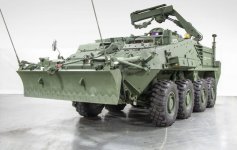I am aware of two requests from the TF in Kandahar which were denied for the purpose an equipment lifecycle management objective. The AVLB request was denied because sending those to Afghanistan would undermine the argument for their not being replaced, and LAV TUA was not sent because it might undermine continued progress of the tank replacement.
The AVLB justification may be just rumour. I know it was requested and denied, but I was never part of the conversations as to why. I was in the room at a DLEPS Ops brief when instruction was given not to support any efforts to deploy LAV TUA because it could do jobs that CF said only a tank could do, and an in-service vehicle doing those jobs in Kandahar might have taken wheels of the tank replacement cart.






